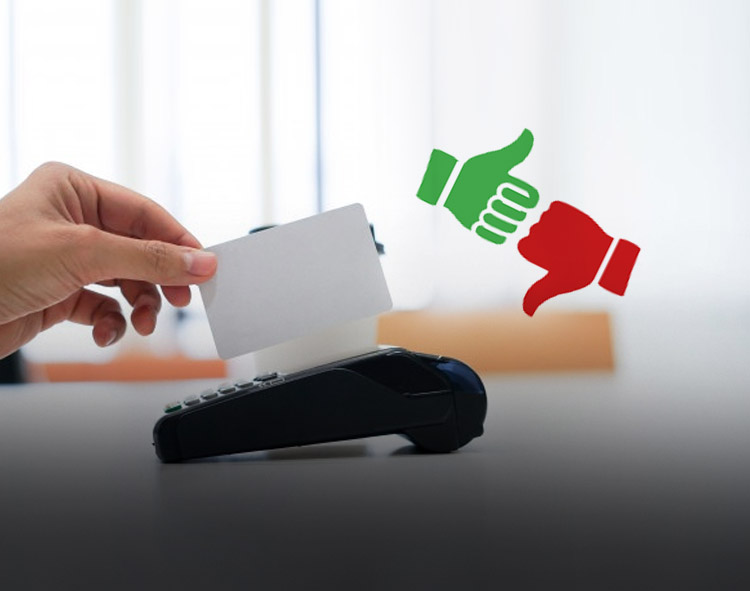Contactless payments have been helping facilitate everyday purchases and deliveries during the Covid-19 pandemic more seamlessly; for businesses and individual end users. While contactless payments is not a new concept, the Covid-19 pandemic pushed for a fast paced adoption of this technology by consumers and businesses.
Given how adhering to social distancing norms as a result of the Covid-19 is a key to curbing spread of the disease, when it comes to payment solutions; one can’t help but ask – is it now time to abandon traditional payment methods and devices for a 100% contactless option?
Read More: GlobalFintechSeries Interview with Clara Shih, CEO and Founder at Hearsay Systems
Let’s weigh a few pros and cons before coming to a conclusion:
A few Advantages of Contactless Payments
Contactless payment solutions offer a range of advantages to businesses and individual end users.
Ease of Use and Increased Operational Efficiency
E-commerce / retail outlets that allow contactless payment options help reduce the issues that come with remembering and punching a PIN while making a card or device based payment. From a business and customer point of view – this works well for both sides because queues will move faster, there will be fewer hassles at the point-of-sale or check out and more importantly; the entire process is easy and quick thereby saving both parties some precious time. Contactless payments are beneficial for businesses because it leads to reduced workforce requirements, staff won’t be required to count cash or run card processing machines.
Enhanced safety and is a great way to better overall customer experiences
Contactless, tap-to-pay technologies can be more secure than other payment modes, the chip technology helps protect against fraud through encryption. At a time when data privacy is a big time concern, offering contactless payment solutions can instill a sense of safety and trust associated with the brand and lead to a better customer experience. Moreover, at a time such as now when being socially distant is akin to protecting your health and safety; contactless payments help ensure that added safety when it comes to overall health; making it a must-have payment mode for today’s environment. The smoother process with which contactless payments allow users and businesses to close a deal or end a purchase serves as a cherry on the cake.
Flexibility at no extra-cost
Bulky wallets or the need to have lose change is not something today’s payees need to worry about. Contactless payment solutions allow users to make payments using just their phone; many a times once the device is set-up, there is no processing fee for either party involved and businesses usually pay the same regular transaction fee as that of a credit card. Besides the convenience that contactless payment offers end users, the flexibility that comes with it have contributed to making it a preferred mode of payment among the younger Millenial and Gen Z populations. Extra costs are usually associated only when making contactless (international) payments and the fee is usually a normal bank/institute processing fee.
Contactless payments have already carved a niche in the global fintech market. The speed and ease of transactions that the technology supports is only one part of the reason for its growing popularity. Businesses are looking to invest in newer contactless payment modes to empower customers and invest in the future of the new normal.
As a result, banks of tomorrow will probably start relying more on contactless cards among other technologies to help embrace the benefits and offers more features that enable easier contactless payments.
Read More: The Influence of Mobile Apps WeChat Pay and Alipay Extends Far Beyond China’s Borders
A Few Disadvantages of Contactless Payments
Despite the advantages that contactless payment solutions offer users and businesses, the technology can give rise to a few concerns. New innovations are being able to address most of these concerns today. But just as an overview, here are a few challenges:
Not as widely accepted
Like most technologies, for contactless payments to work, it requires both parties to invest in a set-up of some kind. If retailers or point of sale systems do not have the solution integrated with current payment systems; end users won’t be able to use the facility even if they have their part set up. Spotty network coverage at the time of a payment can also turn out to be deterrent in some cases, especially urgent or critical situations. There can also be technological barriers to adoption because users need to have an NFC compliant smartphone to be able to use these tap-to-pay systems.
Lower transaction limit
To limit misuse and fraud, most banking and financial institutions who offer contactless payment facilities will ensure a maximum payment limit to it. In most cases, limits for card payments and net banking will be higher and that of contactless payment modes much lower.
Security concerns
There is always a sense of fear in the minds of both customers and businesses when it comes to contactless payments; despite the system being backed fraud detection and multi-layer security.
While new payment solutions are constantly upgrading their features and offerings to enhance the end user experience and reduce customer and business doubts, one thing is for certain: contactless payment technology will contribute to a change in how B2B and B2C transactions are closed over the next decade; given the speed at which an instant tap-to-pay solution works today end transactions in seconds; it will be interesting to see how the future of contactless payments reduces the time spent to pay even further.
Read More: GlobalFintechSeries Interview with Jill Homan, President at DeepTarget
